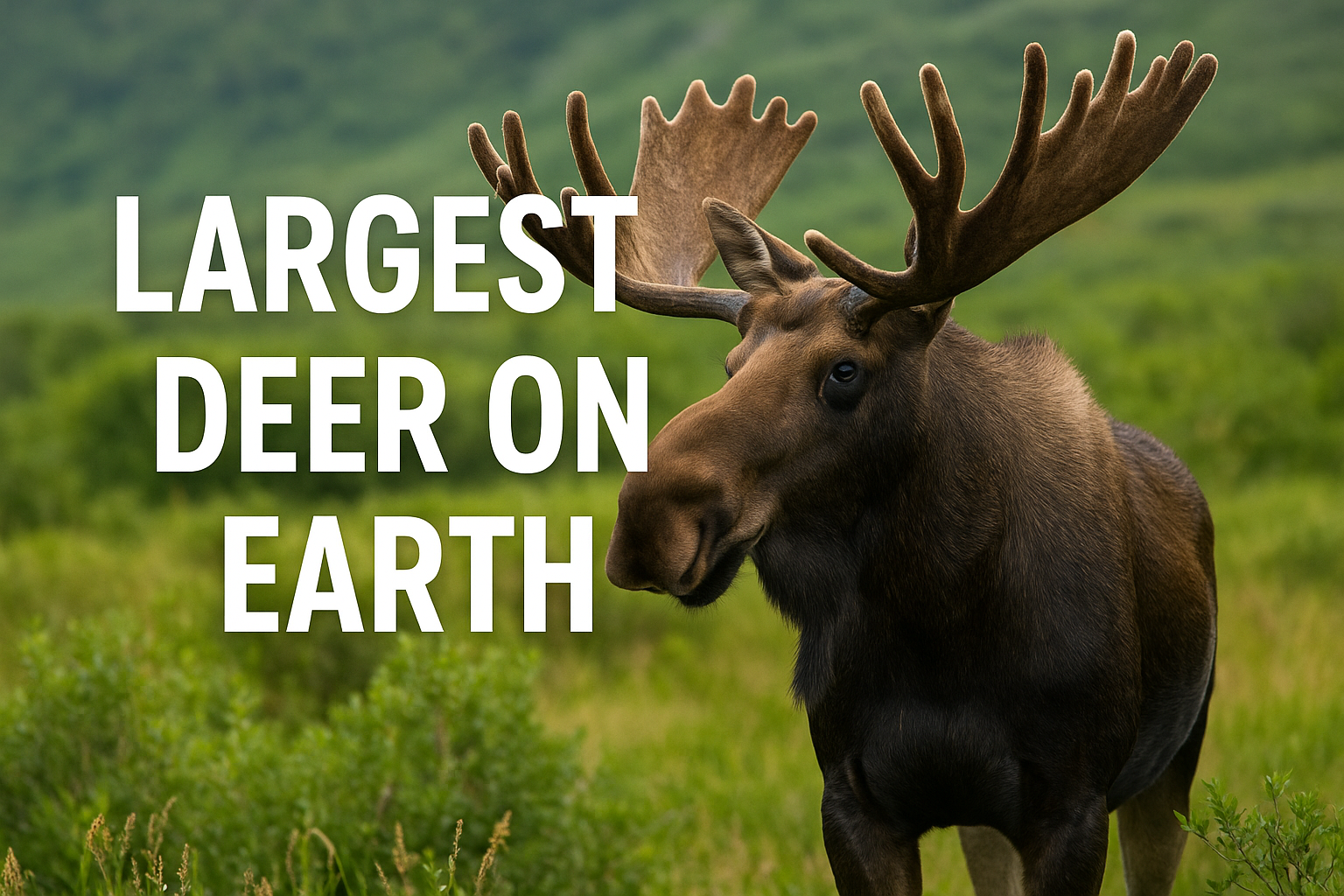Deer are majestic creatures found across the world, ranging in size from the tiny muntjac to the towering moose. While many people are familiar with deer, few know that the largest deer species on Earth is the Moose (Alces alces).
In this article, we will explore why the moose is the largest deer, where it lives, and other interesting facts about this impressive animal.
What Makes the Moose the Largest Deer?
Moose are the largest members of the deer family, scientifically known as Cervidae. They are easily recognizable by their large size, long legs, and broad, palmate (shovel-like) antlers. While the moose is a member of the deer family, its size and appearance set it apart from other deer species.
Here are some key facts that explain why the moose holds the title of the largest deer:
- Size: A fully grown moose can weigh between 600 to 1,500 pounds (270 to 680 kg), depending on the region and sex of the animal. Males, also known as bulls, are typically larger than females, known as cows. Adult bulls can stand up to 6.5 feet (2 meters) tall at the shoulder.
- Antlers: Moose have massive antlers that can spread up to 6 feet (1.8 meters) wide. These antlers are shed and regrown each year. The large antlers are primarily used by bulls in battles during the mating season to establish dominance.
- Height and Build: The moose’s long legs and large body make it one of the tallest land mammals in North America. Their legs help them navigate through deep snow and wade in cold waters where they often feed on aquatic plants.
Habitat and Distribution of Moose
Moose are native to the northern regions of North America, Europe, and Asia. They thrive in cold climates, with the majority of the population found in Canada, Alaska, and northern parts of the United States. In Europe, moose are found in Scandinavia, Russia, and parts of Finland.
Moose are solitary animals, typically found in forests, wetlands, and areas with a combination of dense vegetation and open space. These environments provide the moose with a variety of food sources, such as tree bark, shrubs, and aquatic plants.
The Diet of a Moose
Moose are herbivores, meaning they only eat plants. Their diet is composed of a wide variety of vegetation, including:
- Trees: Moose love to feed on the leaves, twigs, and bark of trees like willow, aspen, and birch.
- Aquatic Plants: Moose are excellent swimmers and often wade into lakes, rivers, and ponds to eat aquatic plants such as water lilies and pondweed.
- Shrubs and Grasses: In the summer months, they graze on shrubs, grasses, and herbs that grow in the wild.
During the winter, when food becomes scarce, moose rely heavily on tree bark and woody shrubs.
Interesting Facts About Moose
- Strong Swimmers: Despite their size, moose are strong swimmers and can travel long distances in water. They use their long legs to paddle and are known to dive underwater to forage for aquatic plants.
- Distinctive Call: Moose communicate with each other through vocalizations, including a loud, grunting call known as a “moose bellow.” This is especially common during the mating season.
- Poor Vision but Good Senses: Moose have poor eyesight, but their sense of smell and hearing are exceptional. They rely on these senses to detect predators or other moose.
- Threats and Conservation: While moose are not considered endangered, they face threats such as habitat loss, hunting, and climate change. In some areas, their populations are managed through hunting regulations.
Comparison of Moose and Other Deer Species
| Feature | Moose | White-tailed Deer | Elk (Wapiti) | Red Deer |
|---|---|---|---|---|
| Scientific Name | Alces alces | Odocoileus virginianus | Cervus canadensis | Cervus elaphus |
| Average Weight | 600 – 1,500 lbs | 100 – 300 lbs | 500 – 800 lbs | 400 – 500 lbs |
| Average Height | 5 – 6.5 feet (1.5 – 2m) | 3 – 3.5 feet (0.9 – 1.1m) | 4.5 – 5 feet (1.3 – 1.5m) | 4 – 4.5 feet (1.2 – 1.4m) |
| Antler Size | Up to 6 feet (1.8m) | 1.5 – 3 feet (0.5 – 1m) | Up to 5 feet (1.5m) | Up to 4.5 feet (1.4m) |
| Habitat | Northern forests, wetlands | Woodlands, farmlands | Open woodlands, grasslands | Forests, grasslands |
Conclusion
The moose is truly the giant of the deer family, known for its impressive size and strength. With its distinctive antlers and solitary nature, the moose has captured the imagination of wildlife enthusiasts around the world. Whether swimming across a lake or wandering through dense forests, the moose continues to reign as the largest deer on Earth.
FAQ’s
1. How big is a moose?
A moose can stand up to 6.5 feet tall at the shoulder and weigh anywhere from 600 to 1,500 pounds, depending on the sex and region.
2. What do moose eat?
Moose are herbivores and eat a variety of plants, including tree bark, shrubs, aquatic plants, and grasses.
3. Where do moose live?
Moose are found in northern North America, Europe, and parts of Asia. They prefer cold climates and live in forests, wetlands, and areas with a mix of vegetation and open spaces.
4. Are moose dangerous?
While moose are generally not aggressive, they can become dangerous if they feel threatened, especially during the mating season. It is best to keep a safe distance.
Also Read:- 7 Succulents That Look Like a Snake Plant—Easy & Stylish Alternatives
